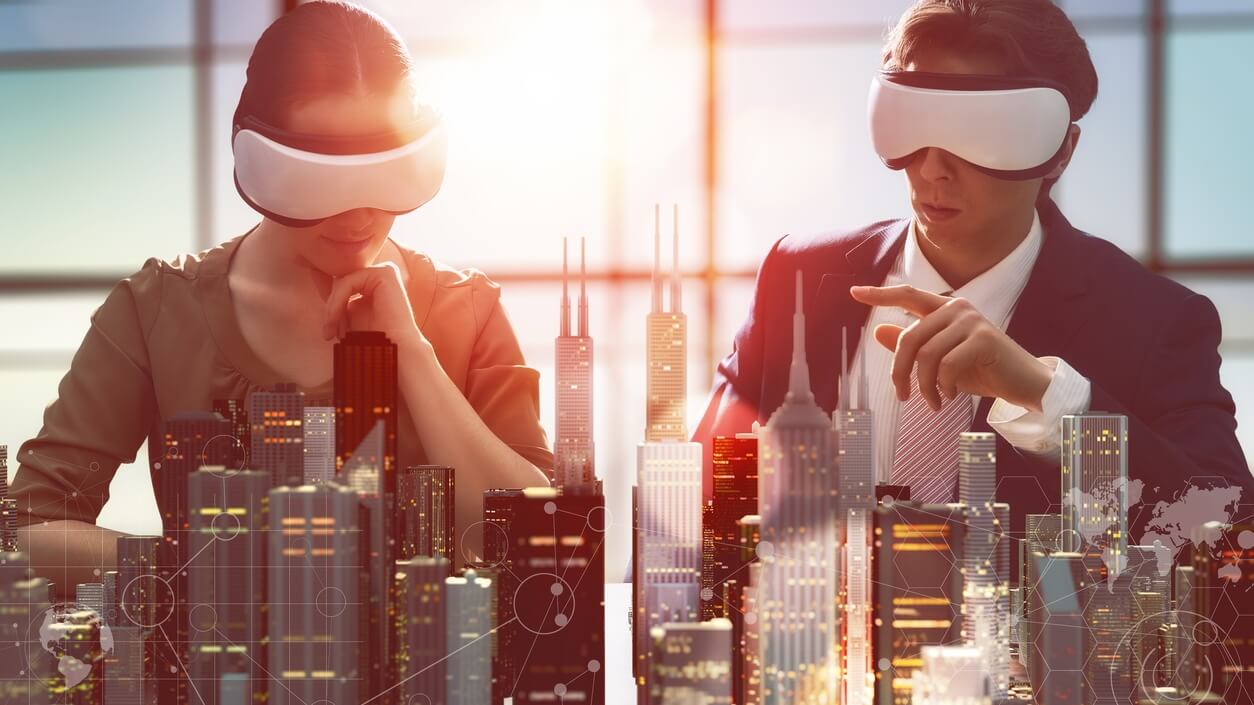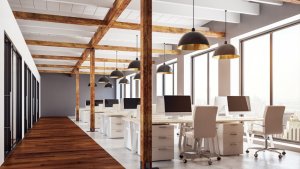What Will Smart Buildings Look Like In Future?
Buildings are getting smarter. What will your office look like in 10 years' time?

The way we work - the where and the how - is an integral part of most people’s daily lives. Those of us in offices will be used to the daily ups and downs that come with sharing space with others; whether it’s feeling too cold, too hot or not being able to find a desk or your colleagues when you need them.
All of this is changing, however. Technology, powered by a new digital ecosystem, is rapidly transforming the workplace. This new ecosystem comprises inexpensive computational power, billions of connected devices, faster and more widespread connectivity, and huge volumes of data.
Businesses are embracing change, and technology has enabled companies to restructure and remodel products and services to place greater emphasis on user experience, productivity and sustainability.
So called ‘smart buildings’ represent the future of the office, so what will it look like?
The use of advanced sensor systems and the adoption of mobile and wearable devices, combined with the Internet of Things (IoT), will transform the services a building can deliver, optimising energy provision, temperature control, digital wayfinding (using sensors to find deskspace and map surroundings) and, ultimately, creating a better overall user experience.
Companies who use information from next generation Building Management Systems (BMS) will cement the link between building performance and their business objectives. By 2030, operational and tactical management of workplaces will be delegated to algorithms that will support the productivity of staff.
In the near future, buildings will be able to marry building usage data with information about individual staff movements and work habits to engineer collaboration between staff members, increasing cooperation and driving business success.
On a more operational level, smart buildings will monitor individual devices (such as TVs, PCs, and desk lamps) via Power over Ethernet technology switching them off remotely when not required, making the building more sustainable and cost effective.
The most innovative buildings have already embedded some of these solutions. Deloitte’s The Edge, in Amsterdam, is perhaps an overused case study, but nonetheless relevant.
Equipped with more than 30,000 sensors, employees are connected to the building via an app, which helps them to find parking spaces, desks or even other colleagues. Sensors are also used to monitor temperature, movement, light, CO2 and humidity. As a result, it uses 70 per cent less electricity than comparable office buildings.
However, smart buildings will soon go further than this. Sensors will compile data on space usage within the office building, which will change the very way workplaces are designed.
The analysis of this data will reveal crucial information on work patterns and people’s behaviours within the building, which will translate into optimised office space and a business strategy that will place individuals’ needs at the very core of it. Put simply, buildings will adapt to fulfil employees’ needs, rather than their behaviour being driven by the building in which they work.
Technology and the IoT are already being harnessed in the workplace as an instrument for businesses to improve performance and user experience.
Of course, monitoring employee movements does raise questions over privacy but, providing businesses can demonstrate that the use of such technology is for the benefit of employee’s user experience, its adoption should be supported. Once workers realise the tangible benefits these systems bring to their working day, they will be more likely to approve on grounds of privacy.
Elsewhere, a leading American bank used sociometric badges to identify why some of their call centre employees were more productive than others. Realising that the most productive employees were those that took breaks together, the bank rescheduled employees’ breaks to maximise interactions and saw a 10 per cent increase in productivity.
When sociometric badges and similar technologies become suitable for use at scale, it will be possible to assess the impact of workplace design changes on business in real time. The offices of the future, again powered by devices and data, will go one step further.
The next few years will mark a hugely transformative period that will see rapid technological advances fundamentally altering not just where but how we work.
Office design must be fluid as data demonstrates how space is actually used. In the not too distant future, only the businesses prepared to embrace technological change and, moreover, be led by it, will thrive.
Thanks for signing up to Minutehack alerts.
Brilliant editorials heading your way soon.
Okay, Thanks!



